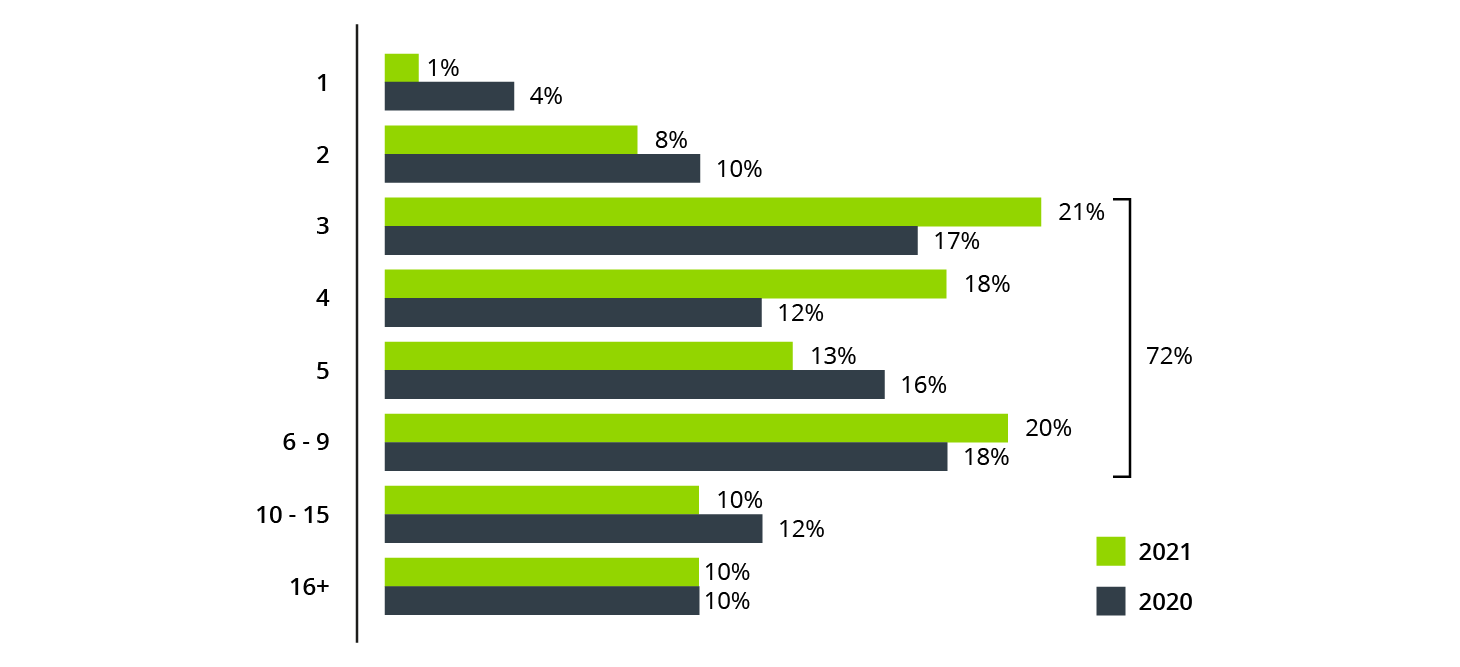Too Many UC&C and UCaaS Tools, Too Little Visibility
Growing reliance on communications platforms makes effective edge monitoring an imperative.

Some would say unified communications and collaboration (UC&C) platforms and unified-communications-as-a-service (UCaaS) platforms have been absolutely imperative during these challenging times, where remote work has become a means of conducting daily business. Others have been less enthralled with this shift, but no one is likely to dispute the growing reliance on such tools.
As many organizations begin to put hybrid work policies in place, UC&C remains key to maintaining the connectivity needed to ensure employees, partners, and customers can interact successfully. In a recent survey commissioned by NETSCOUT, 93 percent of IT leaders queried stated that collaboration tools are viewed as vitally important to their hybrid work policy. The same percentage of companies indicated they have added new UC&C tools and apps in the past 18 months.
Growth in Number of Tools Creates Greater Complexity
In fact, the sheer number of tools being deployed by organizations is enormous. The survey revealed that 72 percent of enterprises are using between three and nine UC&C tools, while 20 percent of companies rely on more than 10.

Several factors are driving this proliferation of tools, including enterprises testing out different solutions to see what works best for the business, and the need to accommodate partners, vendors, and customers who are using different platforms to conduct meetings. In some cases, the choice comes down to differing features and varying levels of security. In the end, silos within organizations often end up using different tools, leading to a grab-bag approach.
This complexity has created real problems for IT organizations, which often struggle to pinpoint the source of issues when vital communication services falter. Perhaps that is why the survey found 86 percent of respondents plan to consolidate the number of UC&C platforms in the coming year.

Visibility Is Key to Delivering a Superior User Experience
IT departments are under increasing pressure to gain visibility into the services being delivered so they can rapidly analyze and evaluate availability and reliability issues in today’s complex environments, which often include a mix of on-prem and in-the-cloud infrastructure.
To avoid gaps in visibility, IT needs to identify key instrumentation vantage points to monitor. Gaining visibility out to the edge will enable IT teams—and their vendor partners, in the case of UCaaS—to quickly troubleshoot disruptive issues as they emerge, reducing mean time to knowledge (MTTK) and mean time to repair (MTTR).
Packet Data and Synthetic Testing Allows for Smart Edge Monitoring
When packet data and synthetic test technologies are combined to monitor complex environments, particularly out to client edges, smart edge monitoring is achieved. Including transaction testing capabilities from synthetic testing enables IT to simulate the numerous types of interactions an end user has with these collaboration applications across an enterprise network environment. One of the benefits of synthetic testing is that it can be performed during off-hours, allowing IT to detect and start troubleshooting problems before they can impact active end users.
NETSCOUT is a leader when it comes to smart edge monitoring. Our NETSCOUT Smart Edge Monitoring solution delivers borderless monitoring and visibility. This next-generation solution is geared to provide visibility across all of the edges of an enterprise’s infrastructure, allowing IT to deliver the best digital end-user experience for any application across any environment.
For more insights into unified communications and collaboration service trends, please see the “Communication, Collaboration & IT: Growing Pains and IT Strains” report.